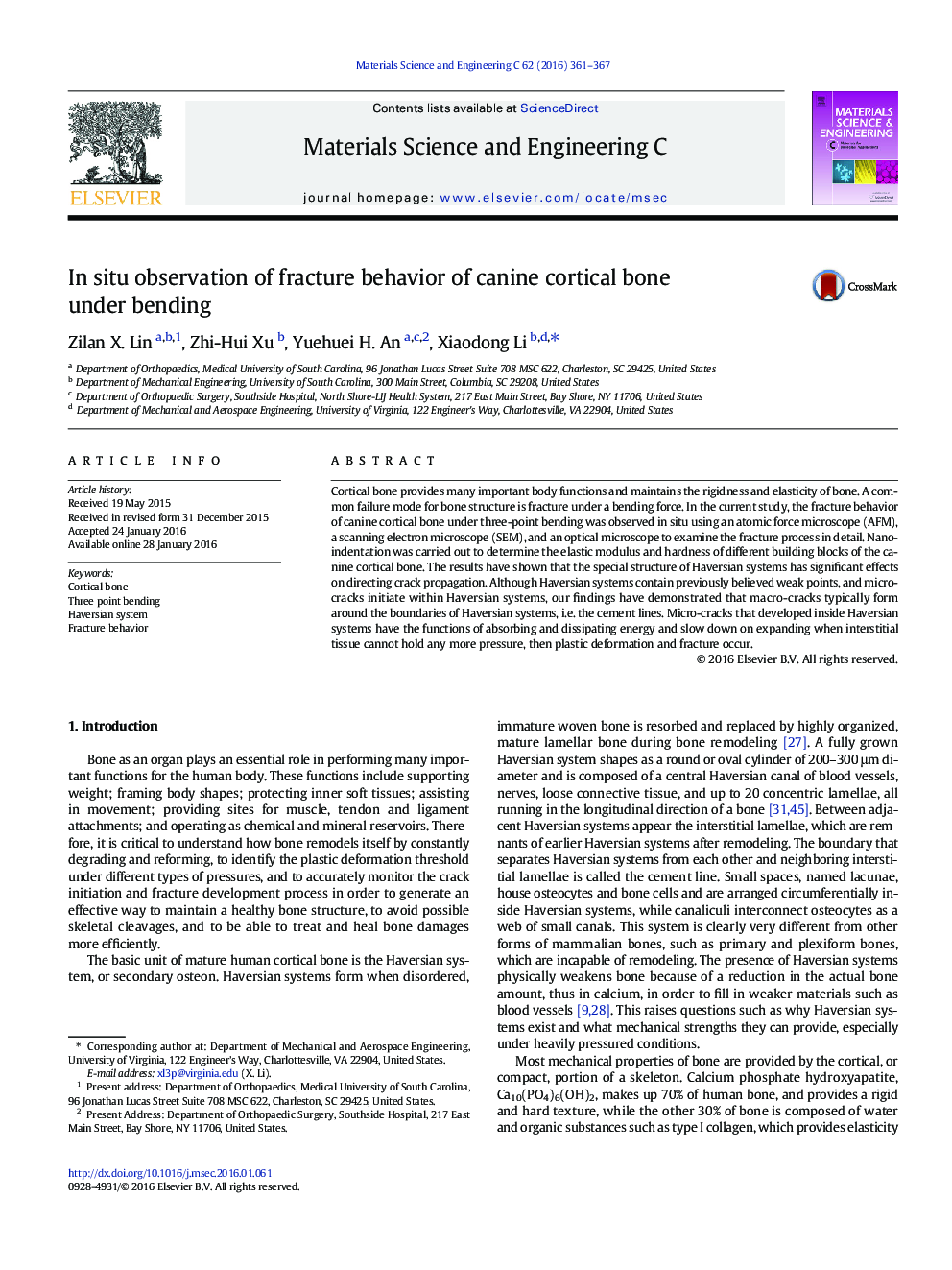| Article ID | Journal | Published Year | Pages | File Type |
|---|---|---|---|---|
| 7867760 | Materials Science and Engineering: C | 2016 | 7 Pages |
Abstract
Cortical bone provides many important body functions and maintains the rigidness and elasticity of bone. A common failure mode for bone structure is fracture under a bending force. In the current study, the fracture behavior of canine cortical bone under three-point bending was observed in situ using an atomic force microscope (AFM), a scanning electron microscope (SEM), and an optical microscope to examine the fracture process in detail. Nanoindentation was carried out to determine the elastic modulus and hardness of different building blocks of the canine cortical bone. The results have shown that the special structure of Haversian systems has significant effects on directing crack propagation. Although Haversian systems contain previously believed weak points, and micro-cracks initiate within Haversian systems, our findings have demonstrated that macro-cracks typically form around the boundaries of Haversian systems, i.e. the cement lines. Micro-cracks that developed inside Haversian systems have the functions of absorbing and dissipating energy and slow down on expanding when interstitial tissue cannot hold any more pressure, then plastic deformation and fracture occur.
Related Topics
Physical Sciences and Engineering
Materials Science
Biomaterials
Authors
Zilan X. Lin, Zhi-Hui Xu, Yuehuei H. An, Xiaodong Li,
